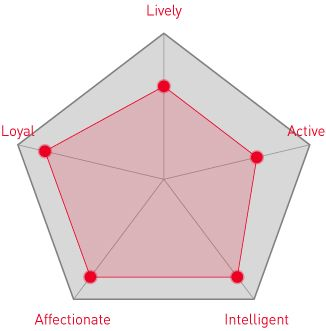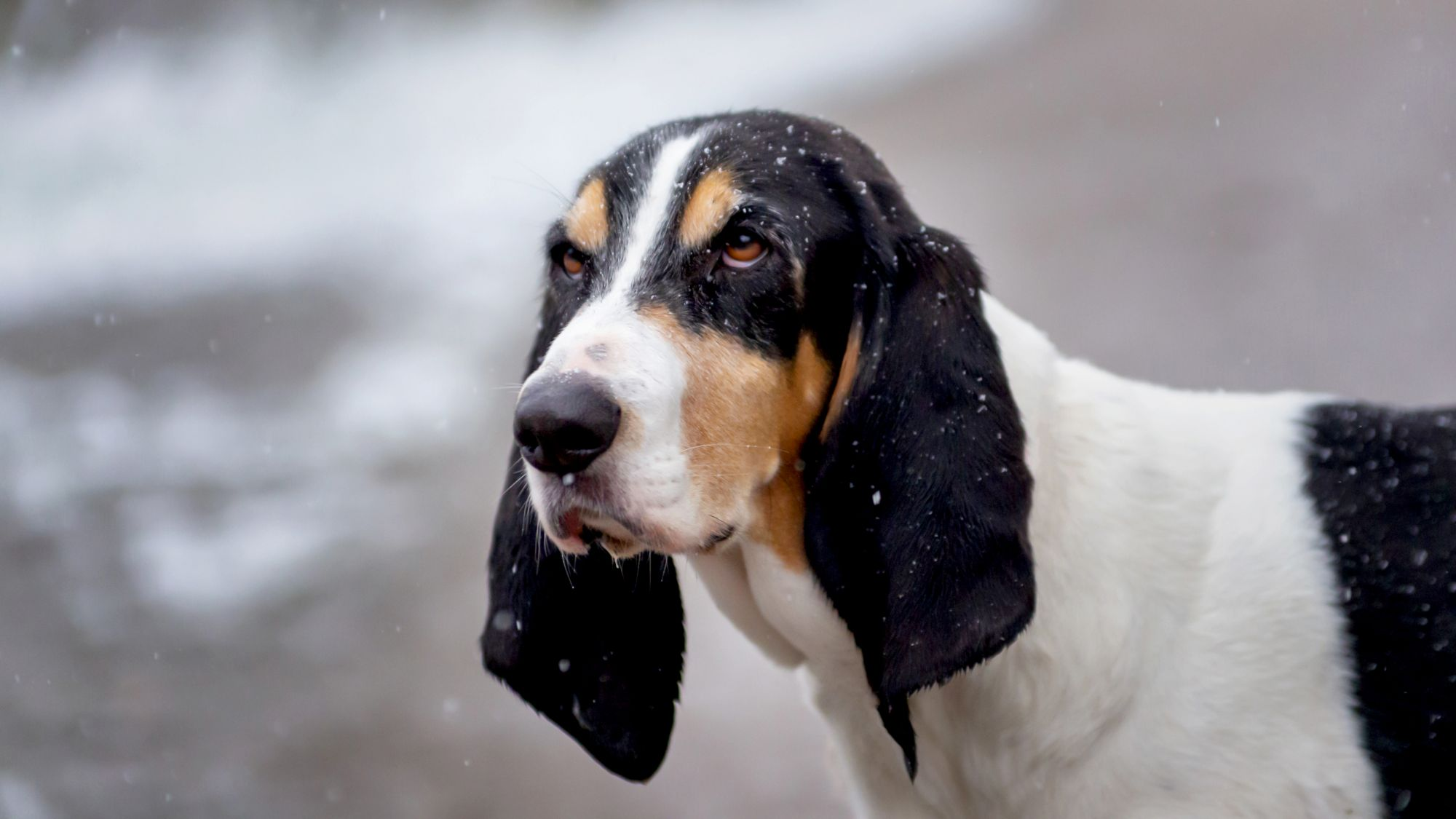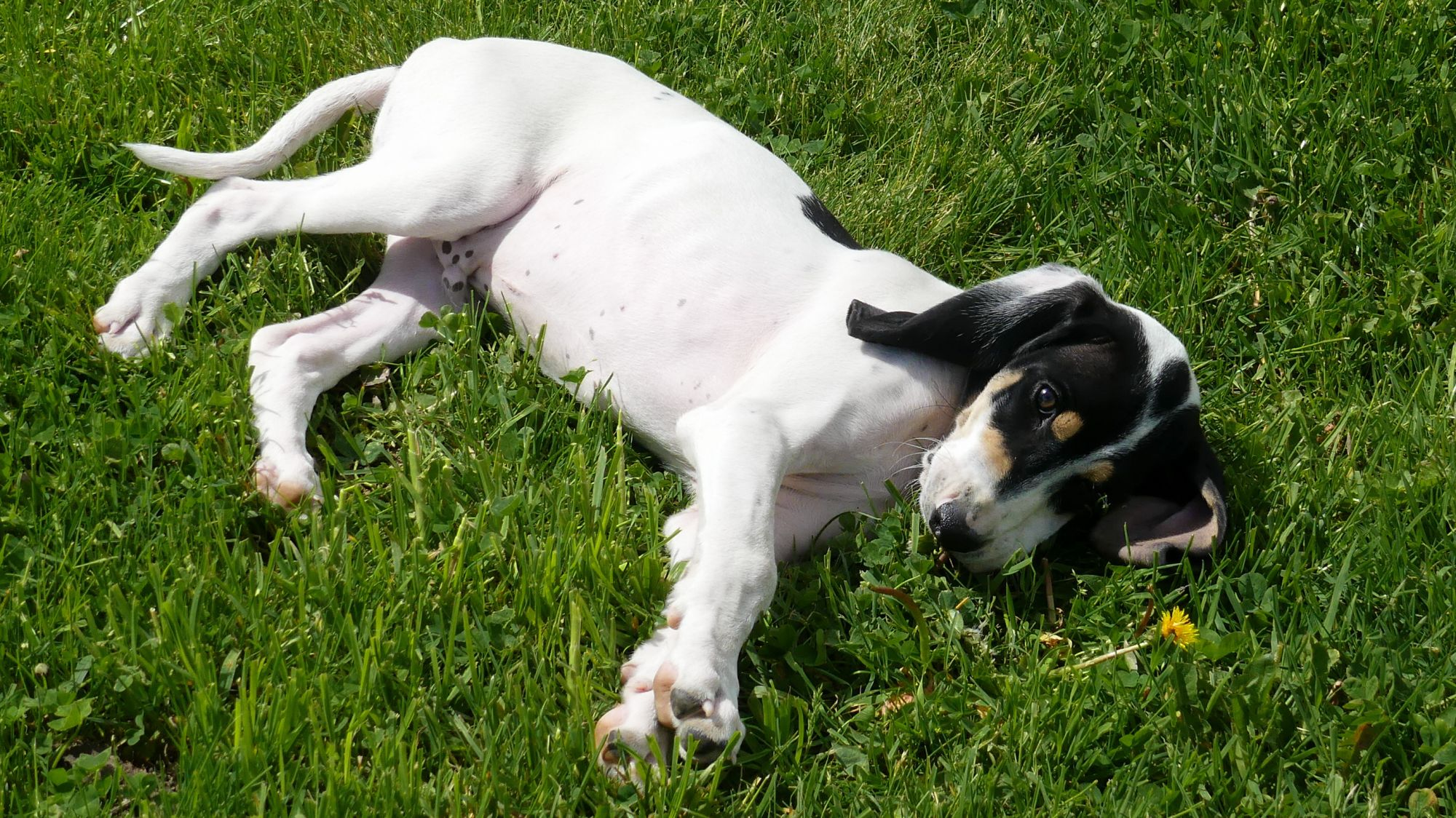
Let's talk Ariegeois
A hardy working dog hailing from the Mid-Pyrénées in France, this resplendent scenthound was originally bred for hunting and has the keen nose and incredible endurance to prove it. Lean, muscular and agile, the Ariegeois has boundless energy, which you will be required to burn off as their owner. Consistent, firm training will pay off and the spirited breed, once trained, is known to be very well-behaved (as long as they don’t catch a whiff of anything too distracting) and devoted to their human family.Official name: Ariegeois
Other names: Ariege Hound
Origins: France

| Drooling tendencies |
|
Warm weather? | |
| Shedding level |  |
Suited to apartment living? | |
| Energy level (high, low, medium) *: | Moderate to high | Family pet? * |
 |
| Compatibility with other pets |  |
Can stay alone?* |
* We advise against leaving pets alone for long stretches. Companionship can prevent emotional distress and destructive behaviour. Speak to your veterinarian for recommendations.
Every pet is different, even within a breed; this snapshot of this breed’s specifics should be taken as an indication.
For a happy, healthy and well-behaved pet, we recommend educating and socialising your pet as well as covering their basic welfare, social and behavioural needs.
Pets should never be left unsupervised with a child.
All domestic pets are sociable and prefer company. However, they can be taught to cope with solitude from an early age. Seek the advice of your veterinarian or trainer to help you do this.


| Baby age: | Birth to 2 months |
| Puppy age: | 2 to 12 months |
| Adult age: | 1 to 7 years |
| Mature age: | 7 to 10 years |
| Senior age: | 10 to 20 |

1/7
Get to know the Ariegeois
All you need to know about the breed
While not technically a retriever, this hunting dog was bred to go and get things, a skill the Ariegeois still exhibits whether in their native Pyrénées mountains or near a pile of your laundry. Ariegeois also possess exceptional scent-tracking skills, a trait you will notice if their astute noses pick up something interesting while you are out for a walk. Luckily, they are smart and eager to please so much of their unwanted behaviour can be headed off with firm, consistent training.
This same training renders the loyal, easy-going Ariegeois a wonderful family pet though their exuberance and knock-you-over energy means very little ones shouldn’t be left unsupervised with the pup. Friendly and sociable – they get on very well with other dogs – the breed does, however, have a high prey drive so not recommended for households with smaller animals.
Medium-sized, the Ariegeois has a smooth coat, usually white with black or brown markings, dark, gentle eyes and a strong, athletic body. A hound through and through, the breed has the long, hanging droopy ears – can ears be described as expressive? – to prove it, always ready for a scratch behind them. Repeatedly if you don’t mind.
The Ariegeois breed tends to be naturally wary of strangers. But only at first. Big-hearted, once the initial mistrust wears off they would just as soon lick someone to the ground than go into defence mode. So while a perfect fit for many homes, don’t count on your Ariegeois as a guard dog. Only as a great companion.

2/7
2 facts about Ariegeois
1. The nose knows.
A scent hound, and long considered one of the best of that type, the Ariegeois’ intelligence, discipline and highly developed nose have allowed the breed to track and never lose sight of their prey over long distances. Great in the field; less so on a walk. Teaching leash manners early is essential to make sure your dog follows you, not their nose.
2. Can you ear me?
Recognised for their floppy, delightfully soft hanging ears, an adorable trait no doubt, the feature also means that dirt and oil can get trapped in, around, and under the extra-long folds. Their ears need to be cleaned gently (and dried well) and checked regularly for any signs of irritation, moisture or odour to avoid something called skin-fold dermatitis as well as ear infections.
History of the breed
A relatively recent breed, the Ariegeois first came to be in 1912 or thereabouts. However, they do have old heritage. French through and through, the breed is the result of a series of matings between the Grand Gascon-Saintongeois, the noble Grand Bleu de Gascogne – a distant cousin – and local Briquets or Artois Hounds. The latter have been in France since pre-Roman times, the Grand Bleu de Gascogne even longer.
Named after the Ariège area of southwestern France, the Ariegeois was bred to hunt, chasing its prey through the forests and rocky mountains of the Pyrénées with their highly attuned olfactory ability, endurance and deep powerful voice. The breed took a real hit in World War II and was almost wiped out. Thankfully, a few devotees stepped in and bred the Ariegeois back to healthy numbers.
While relatively unknown outside of their homeland, the breed is popular in France. Recognised nationally in 1954, the United Kennel Club acknowledged the Ariegeois in 1993, giving this elegant, gentle breed official status.

4/7
From head to tail
Physical characteristics of Ariegeois
1. Body
Small, finely built muscular body.
2. Head
Slightly domed skull, full forehead.
3. Eyes
Brown eyes are well-open giving an alert, bright expression.
4. Look
Chest long and of medium width with long, slightly rounded ribs.
5. Tail
Tail is well set and tapers to a point.

5/7
Things to look out for
From specific breed traits to a general health overview, here are some interesting facts about your Ariegeois

6/7
Caring for your Ariegeois
Grooming, training and exercise tips
With their short shiny coat, the Ariègeois doesn’t ask much grooming-wise. Use a firm-bristled brush a couple of times a week to remove loose hair. Bathe only when necessary in order to protect the coat’s natural oils. Teeth should be brushed regularly – daily if they’ll let you – and nails kept short. As a hunting hound, your Ariègeois needs a decent amount of exercise every day to stay healthy and stimulated. This not a breed for a city apartment—they need space. Training and socialising your Ariègeois early will help head off their natural stubborn streak—patience required! But it will pay off in spades. Once trained, Ariègeois hounds get on well with people, including children, as well as other dogs.7/7
All about Ariegeois
We don’t advise leaving any pets alone for long stretches at a time. And particularly for a lovely, energetic and social breed like the Ariègeois, being left alone too long can lead to destructive behaviour – read eat the couch – and a real case of doggie blues.
The average expected life span for an Ariègeois is 10 to 12 years, though some will of course live longer. A generally healthy breed, making sure they have a good healthy diet in recommended amounts and lots of exercise – and fun! – can help ensure they feel good well into their older years.
translations.feature.breeds.otherbreeds
Read more on this topic

How your dog's nutrition needs change with age

How to adopt a dog

Things to consider before getting a dog
Sources
1 - Veterinary Centers of America https://vcahospitals.com/
2 - Royal Canin Dog Encyclopaedia. Ed 2010 and 2020
3 - Banfield Pet Hospital https://www.banfield.com/
4 - Royal Canin BHN Product Book
5 - American Kennel Club https://www.akc.org/



